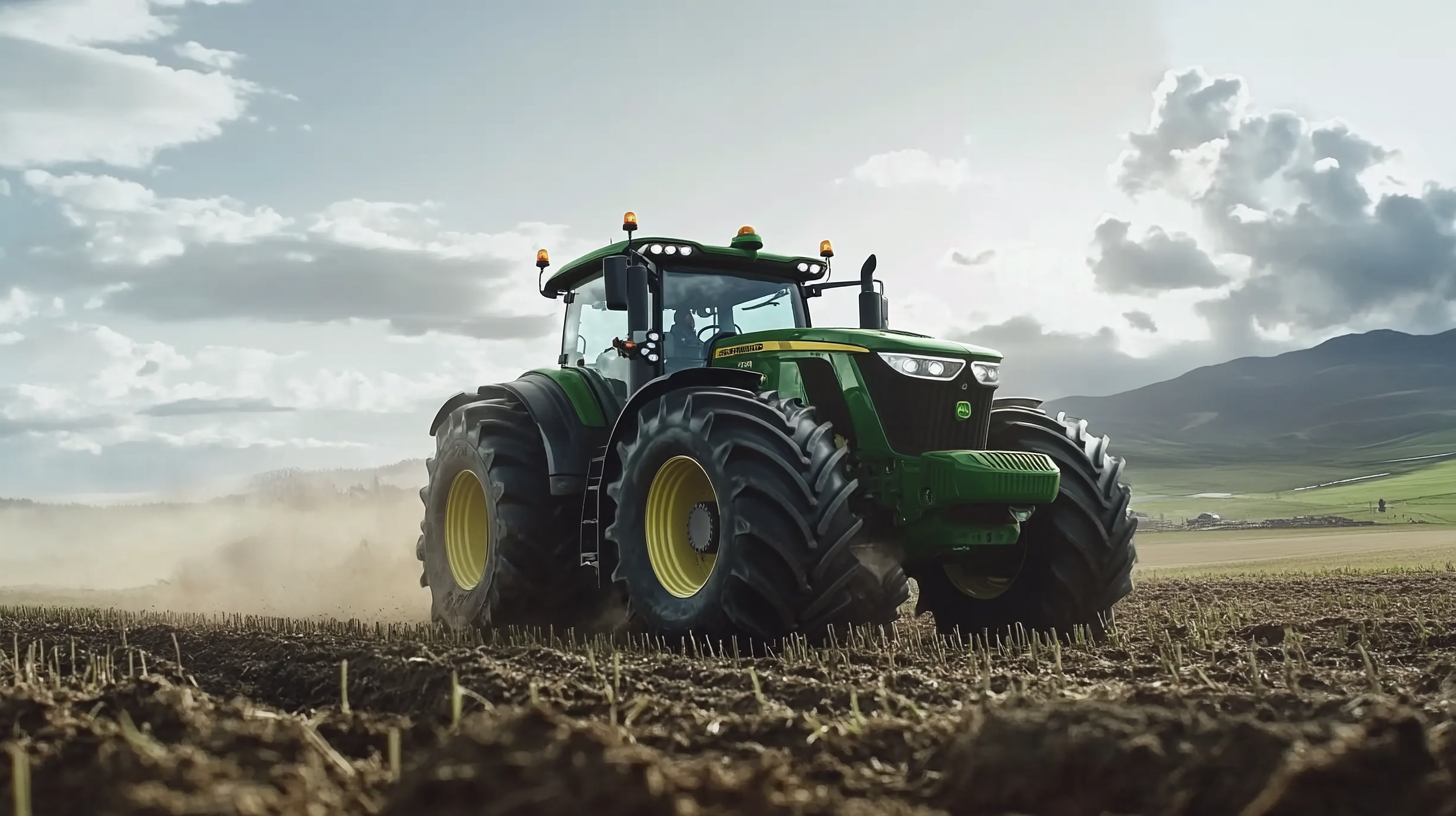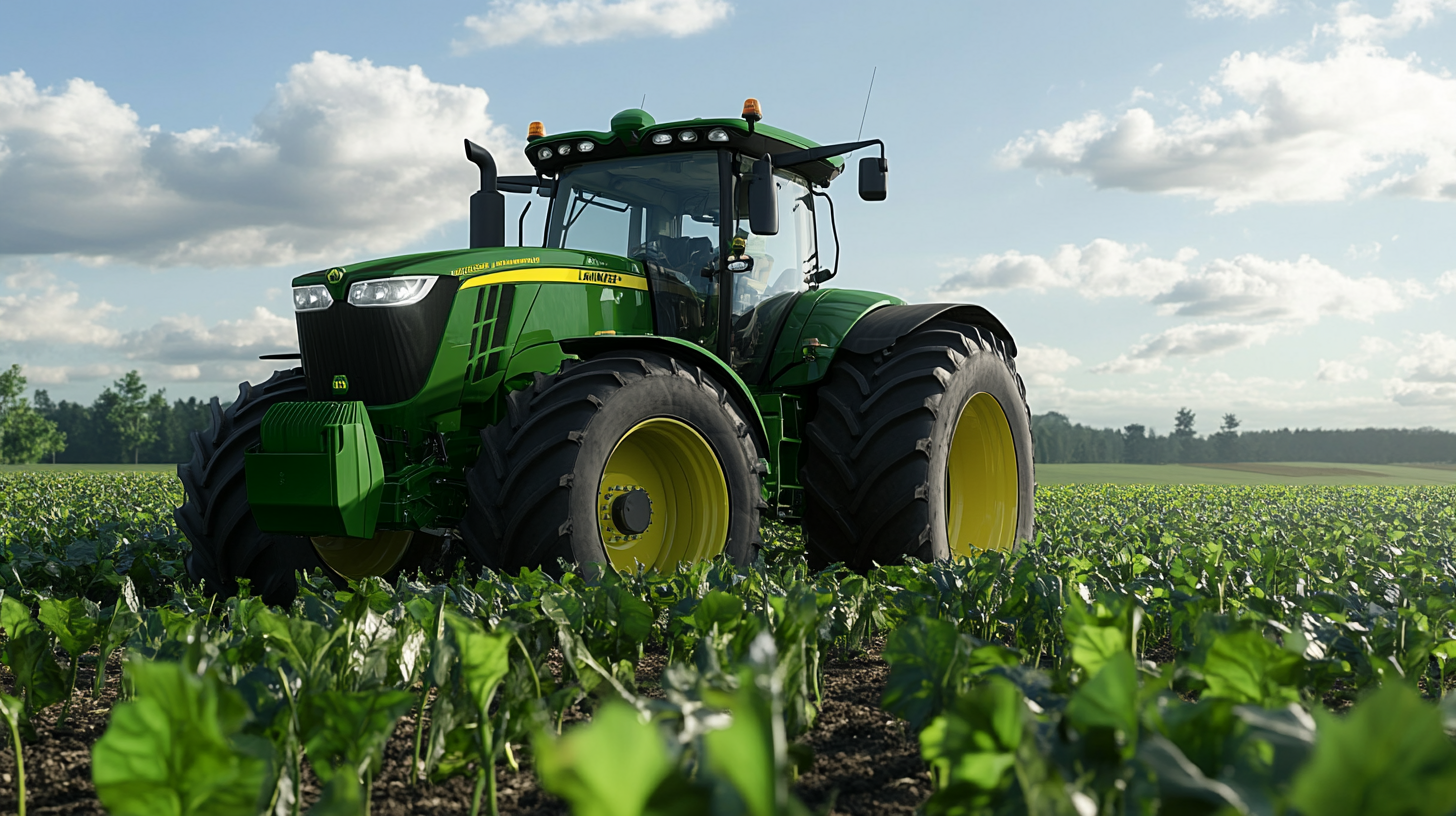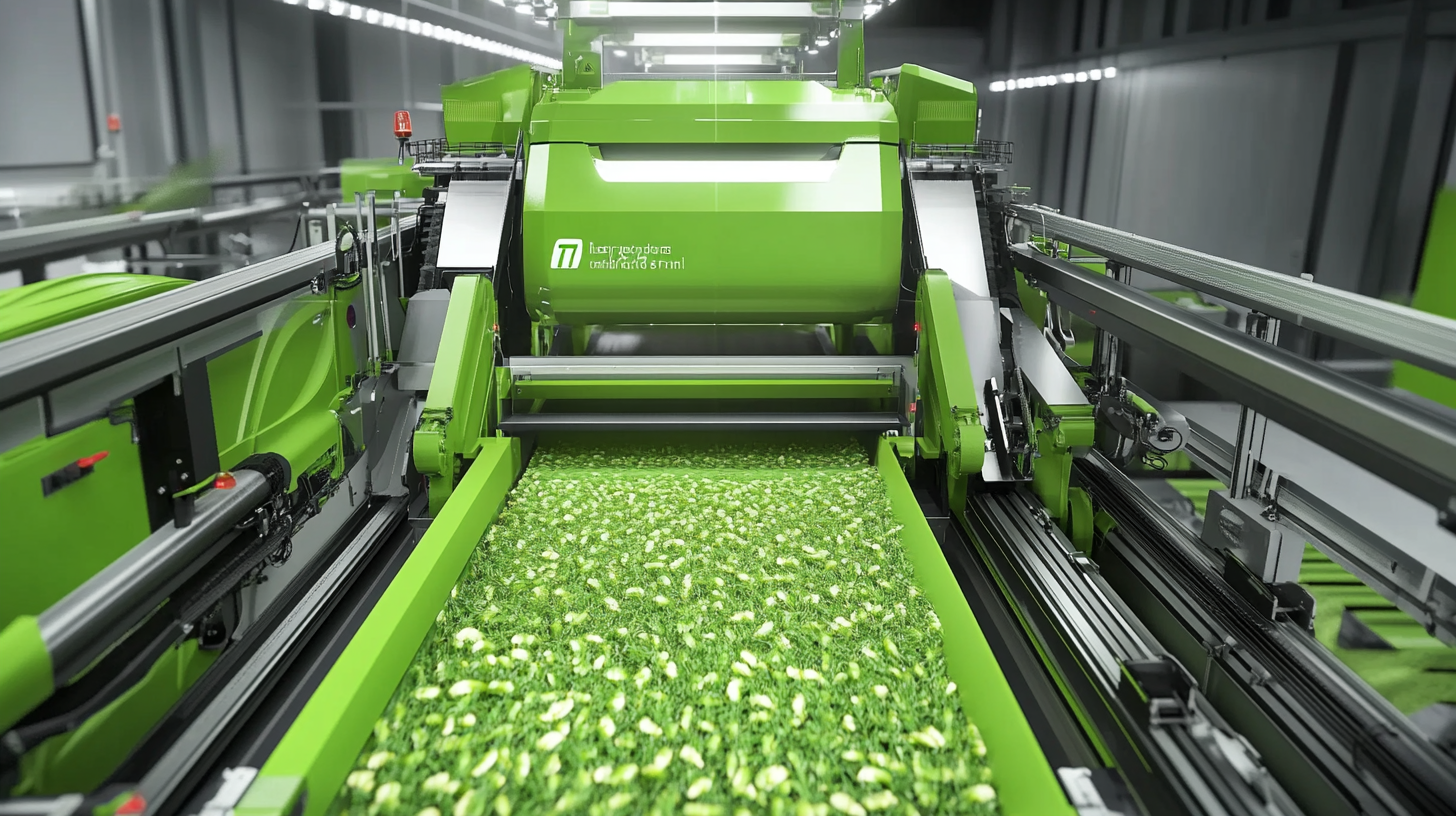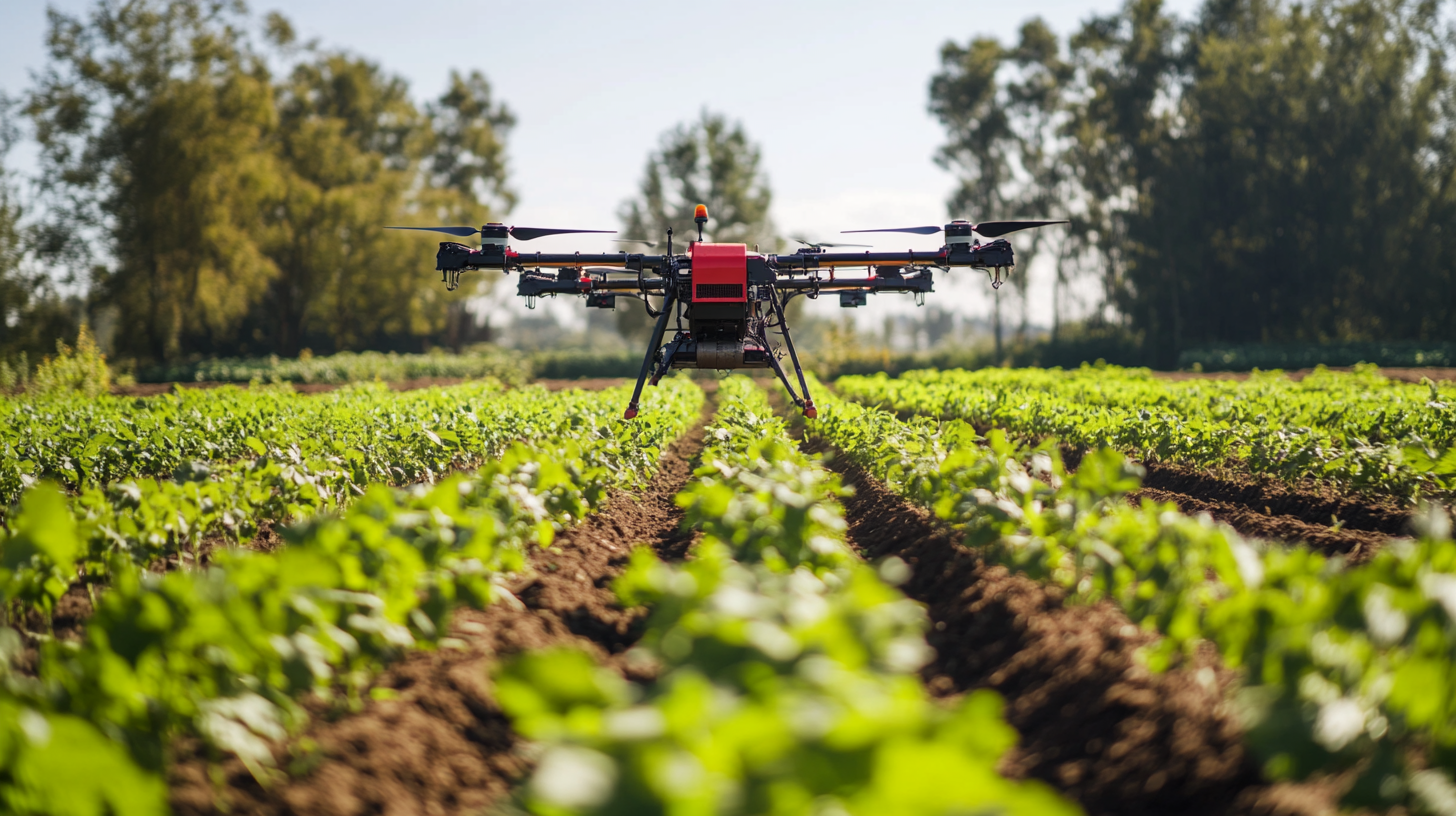This transformation has had serious impacts in the agriculture industry in the past few years, driven mainly by the way advanced Agricultural Machinery is adopted. The global agricultural machinery market is expected to grow from $166.3 billion in 2020 to $227.5 billion by 2025, at a CAGR of 6.9%, according to a report by MarketsandMarkets. The growth comes in response to a pressing imperative for improved farming efficiency, sustainability, and productivity, as farmers search for innovative solutions to meet the food demands of the projected 10 billion global population by 2050.
Integration of cutting-edge technologies such as precision farming and IoT devices into Agricultural Machinery revolutionizing the way farming is done. According to a study of the International Federation of Agricultural Producers, crop yields can be increased by up to 30% through smart machinery and a possible reduction in resources that would have gone to waste. Buyers throughout the world turn increasingly to advanced agricultural solutions not just for their immediate operational needs but also for long-term sustainability goals demonstrating the momentousness of the shift in agriculture worldwide as more and more buyers come to realize these benefits.

The expansion of precision agriculture technologies to maximize crop yields and intensify production must certainly become a global agricultural practice. Indian Prime Minister Modi, recently announcing the continuance of free food for the country for another five years, seems to point to the increasingly prominent place of effective agricultural solutions in the face of rising food demand. The report estimates the agricultural equipment market will surpass $155.7 billion by 2032, registering a CAGR of over 5.5% from 2024 to 2032 with this growth driven largely by increased exploits of advanced and high-capacity machinery in the global market. Drones, artificial intelligence, automated control systems, and other technologies are actively changing the way farming is done. The agricultural automation control systems market is expected to reach $4.38 billion by 2023, with a growth rate of around 10% expected from 2023 to 2032. These innovations help with crop health monitoring, resource optimization, and general efficiency. As nations grapple with the challenges of climate change, the investment in precision agriculture technology has never been more pertinent in safeguarding food production and sustainable agriculture. With such fast growth in agriculture technology, precision agriculture is no longer an option; it has become a necessity. Because of population growth and climate change, the global agricultural landscape is under great pressure. Therefore, it is imperative for farmers to harness these tools in their quest for productivity gains and resilience. The future of farming would be heavily laden with data-based decisions and smart machinery, taking agriculture to a new horizon of efficiency and effectiveness.

Much of the surface in recent years has changed within the agricultural industry as the global demand for increased efficiency fosters advanced agricultural machinery. It had been one of the great benefits from this transformation-it considerably reduces the labor costs which are inevitable in agriculture, especially for cash-strapped farmers. Automation in agriculture thus not only streamlines the processes but also makes possible much higher yields at a lesser manual intensity compared with the conventional ways. Mechanization manifests strong in countries such as China because increasingly, agriculture becomes more complicated with the impending growth of the population and changes taking place in the environment.
The ongoing trade tension between the United States and China indicated that so much for all countries, including in reexamining their agricultural dependence and thereby affecting equipment technology use across the global landscape. Advanced agricultural technology to China may equally gain as a strategic value for productivity-enhancing purposes but with a reduced number of laborers working in the process. As global land availability is becoming more varied-from vast spreads in India to intensive management during farming in China-it will be evident that need efficiency, redefined through technology, would maximize output per hectare.
Modern agricultural machinery installations would be in line with the increasing competitive requirements for farmers and would lead to a more sustainable food production system. The countries which accept this transformation would be better off being in the agricultural market in global terms, having lowered their labor costs and concentrated on automation solutions to enhance efficiency and productivity.

It is full of innovative agricultural systems that make it possible to understand and realize the sustainability aspects of agricultural practices. With traceability on modern equipment, a farmer will know how much to use at what point in time so as to minimize waste and optimize the resource. By precision farming practices, a farmer can conserve not only the necessary amount of water but also apply fertilizers and pesticides that are necessary. Thus, this whole process works for the environment, minimizing many adverse effects through farming practices.
Such sophisticated equipment improves operational performance, realizing very high waste reduction. Examples of such machines include systems designed to monitor crop health and soil condition in real-time for timely interventions that prevent excessive use of resources. This not only improves the crop yield but is also sustainable, as it ensures the effective utilization of all resources without waste.
The machinery that enables using renewable energy like solar tractors and electric equipment further encourages this transition to sustainable agriculture. The result will be a decrease in the carbon footprints of farmers, even as they keep productivity up. Energy-efficient machinery will direct farmers toward a more sustainable agricultural system, thus benefiting the world and their wallets.

The integration of IoT and Big Data in agriculture itself has turned agriculture from subsistence through resource efficiency to the source of market demand for agricultural machinery buyers worldwide. It is interesting to note that recent studies have demonstrated the applicability of the Data Envelopment Analysis (DEA) model in measuring efficiencies of machinery utilization in farms. In this regard, findings indicate that properly optimizing a piece of equipment can increase productivity by 30%. This is of utmost importance in a world where agricultural output needs to match the population pigeons.
For example, IoT technology collects data in real-time from its various machines on farms or connects to devices that farmers can then use to demonstrate or achieve anything they intended through precise analytics. So with precision farming, how data will be obtained at one time and at another time analyzed by creating intelligence-driven insights enables proper allocation of resources, hence reduced waste, higher yield, and the return of more profit. Such improvements can be achieved through IoT, which increased productivity by over 20% compared with traditional ways, according to industry reports.
Agricultural machinery that integrates the ability to analyze Big Data can provide predictive maintenance to reduce downtime and enhance efficiency. This predictive approach is not just cost-effective but also resource-savvy, since fewer resources are wasted. As such, every group of buyers embraces the economy and ecological benefits of data inputs into decision-making, which hastens the adoption of technologically advanced agricultural machinery.
The most important changes taking place in the agricultural landscape are in the economies in emerging markets. They define the parameters of increased demand for high-tech agricultural machinery and also spurred global buyers into bringing things to make efficiency in farming activities even more precise through advanced technology. This investment is important for countries in Southeast Asia, Africa, and the greater part of South America for modernizing their farming techniques and improving productivity.
One of these forces is, of course, the push towards more sustainable practices in agriculture. As for these regions, agriculture contributes largely to their economies, where farmers are looking up at technologies that would minimize resource use while maximizing yield. They might turn to advanced machineries for resource optimization, resource wastage reduction, and crop output increase. For example, precision farming with GPS and data analytics has allowed farmers to optimize operations using better and more informed decisions. This is going to attract buyers from abroad and, at the same time, open up job opportunities in the local economy and promote food security.
Currently, another force driving this shift is population growth and increased food demand. With those conventional practices not being able to match the growth rate, high-tech solutions may prove beneficial alternatives. Farmers are buying machines that have automation efficiency and precision, maximally increasing their operations without affecting environmental standards. Thus, this ongoing evolution is reflective of a more global commitment to the innovation that will drive agricultural productivity to the next level.
Precision agriculture technology refers to the use of advanced tools and techniques, such as drones and AI, to optimize farming practices, monitor crop health, and enhance overall efficiency in agriculture.
Automation streamlines production processes, allowing farmers to achieve higher yields with significantly less manual labor, thus reducing labor costs and increasing overall efficiency.
The agricultural equipment market is predicted to exceed $155.7 billion by 2032, with a compound annual growth rate (CAGR) of over 5.5% from 2024 to 2032.
Advanced machinery optimizes resource use by reducing waste, allowing farmers to apply the right amounts of water, fertilizers, and pesticides, which lowers environmental impact and promotes sustainable farming practices.
Climate-related challenges pressurize the agricultural sector, making it imperative for farmers to adopt precision agriculture technology to safeguard food production and enhance sustainability.
Data-driven decision-making allows farmers to leverage insights and analytics from precision farming technologies to increase productivity and resilience amid evolving agricultural challenges.
Modern machinery facilitates efficient operations by monitoring crop health and soil conditions in real-time, enabling timely interventions that conserve resources and minimize waste.
Advanced technologies enhance productivity and reduce reliance on extensive human labor, positioning countries that adopt them as leaders in the global agricultural market.
Innovations like solar-powered tractors and electric farming equipment allow farmers to reduce their carbon footprint while maintaining productivity levels.
Given the pressures from population growth and climate change, leveraging precision agriculture tools is essential for maximizing crop yields and ensuring sustainable food production.